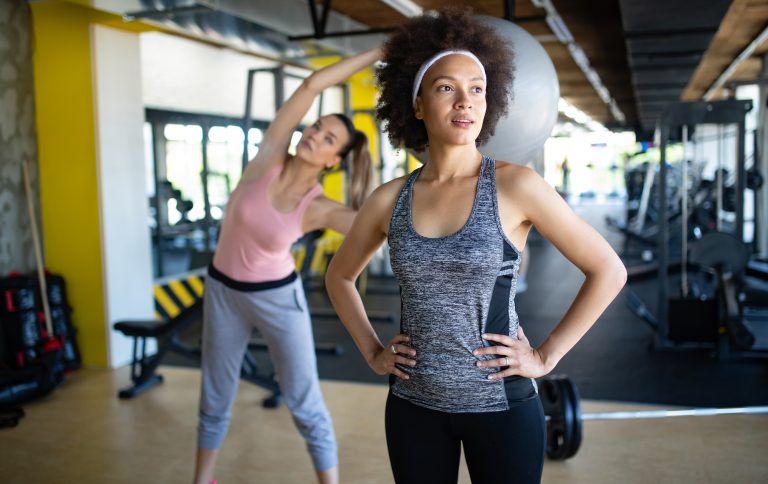Winter weather doesn’t always mean you must confine your workout to the indoors. In fact, with just a bit of planning your outdoor biking or running dedication can rival that of a U.S. Postal worker. Regardless of wind, rain, sleet, snow or hail you can still hit the trail with no worry of derailing your regular fitness plan.
 The three keys of winter workout gear are comfort, safety and warmth. Choose with these criteria in mind and you are well on your way to the kind of workout gear that lets you stride along without contending with the sting of winter. You should also consider your strategy when choosing winter workout clothing. For example, if you are going long and expect a significant increase in temperature, plan accordingly. Layers work well for some; others prefer to tough it out braving the cool temperatures until their bodies and the weather become warmer. Especially if you are racing and choose layers, go for “giveaway” clothes that you can take off as you heat up. Race volunteers often collect these and donate them to local shelters or clothes closet programs.
The three keys of winter workout gear are comfort, safety and warmth. Choose with these criteria in mind and you are well on your way to the kind of workout gear that lets you stride along without contending with the sting of winter. You should also consider your strategy when choosing winter workout clothing. For example, if you are going long and expect a significant increase in temperature, plan accordingly. Layers work well for some; others prefer to tough it out braving the cool temperatures until their bodies and the weather become warmer. Especially if you are racing and choose layers, go for “giveaway” clothes that you can take off as you heat up. Race volunteers often collect these and donate them to local shelters or clothes closet programs.
Warmth
Go for technical thermal or heat regulating tops and bottoms that also wick moisture away from your body. Good options are running tights and close fitting tops that help you regulate body temperature, offer protection from frigid temperatures and wick moisture away. These lightweight fabrics let you feel warm, but not like you are wearing a hot, wet blanket. These fitness tops and bottoms are often constructed with technologically advanced materials and can be expensive. If you can’t afford to buy your workout gear at a specialty running store look for online discounters, consignments and second hand bargains.
Another option for warmth is workout clothing with insulating material. Look for slim gear that offers warmth without bulk. Vests, lined running pants and jackets are all good choices. Don’t forget your ears and fingers. Both are particularly vulnerable to cold weather. There are several updated versions of the ski mask that work well for runners. If you don’t like hats, opt for a headband that gives ear coverage. When choosing gloves, try them on if you want to check that you will still be able to manipulate your phone or mp3 player.
Comfort

Especially if the weather is wet from rain or snow you will want to give some thought to keeping your feet dry. Your regular running shoes are likely not up to the task, but trail shoes are usually a good option. Also, choose cushioned, breathable socks that fit well to reduce the likelihood of blisters. Other good options for rain or snow are wind and water-proof jackets, pants and tops. These cost a little more but in a downpour, or even a hard drizzle, they feel worth every penny.
Safety
Look for workout gear that has reflective stripes. This is very important for safety as typical winter workout times usually come before or after sunrise. In fact, if you work out in high traffic areas you may even want to consider adding a body light (think bicycle light) to your gear list. If you are likely to be running in snow and ice, trail shoes may be a good option for avoiding slips and falls.
Final tips
 Don’t overdress. Remember, your body generates heat and sweats in winter as well in summer. Also, avoid clothes that are too tight and bulky. This will make your workout miserable.
Don’t overdress. Remember, your body generates heat and sweats in winter as well in summer. Also, avoid clothes that are too tight and bulky. This will make your workout miserable.
Know your cold tolerance level. You may find you don’t need any special gear until the temperature reaches 35 degrees. For someone else the magic number may be 25 or 45 degrees.
Don’t forget the sunscreen. It is important to protect your skin from damaging rays even when bathing suit season is months away.


